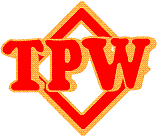Toledo, Peoria & Western Railroad, circa 1970

The Caledonia, IL, version of the TP&W was conceived in 2004, when we decided to tear off the 130-year old portion of our house – single story, filthy crawl space – and enlarge it to 2-story with full basement, my basement. Actually, I have to share it with furnace, water heaters and sump wells, but it’s mostly mine.
Why TP&W? I grew up ¼ mile south of the TP&W, near Crescent City, IL, Milepost 17. Why 1970? That gave me the broadest range of selection of motive power. Since I am modeling the P&PU as well, it also eliminated the need of having two bridges across the Illinois River; the TP&W bridge was destroyed in February 1970 and never replaced. Incidentally, I had no interest in railroading of any kind prior to 1971.
The selection of modeling the TP&W was a stroke of good luck, in that its home base of East Peoria also enabled me to include a number of other railroads in my operating scheme. In spite of space limitations (rare problem, right?), I’ve managed to include 8 of the other railroads in Peoria: Peoria and Pekin Union, Chicago and North Western, Chicago, Burlington and Quincy, Norfolk and Western, Chicago, Rock Island and Pacific, Illinois Central, Illinois Terminal and Gulf, Mobile and Ohio. In addition, I have a major live interchange with Penn Central at Effner, IN, the eastern terminus of the TP&W, and a “staging yard interchange” with the Santa Fe at Fort Madison, IA. The west end of the modeled portion of the TP&W is at Mapleton, on the southwest edge of the Peoria area. The TP&W identifies this as Kolbe, at Milepost 122. The east end of the railroad is at Effner, MP00.
Physically, the layout is made up of two separate levels connected by a 5-loop helix. The upper level (59”-60” high), the helix and TP&W East Peoria Yard make up the First Subdivision, running from Effner (MP00, PC interchange), and including Watseka (MP11, C&EI interchange), Crescent City (MP17), Forrest (MP46, N&W interchange), Fairbury (MP52, N&W interchange), El Paso (MP78, IC interchange), Secor (MP85), the helix representing the 7-mile long grade down into the Illinois River valley, into and through the yard, to MP108 at the yard’s west end. Alas, the other towns in between succumbed to selective compression, including Gilman, a major IC interchange point.
The rest of the lower level, at 39”, represents the rest of the metropolitan Peoria Area (the beginning of the Second Subdivision), plus an 11-track staging yard representing the rest of the world. Except for the C&EI unit coal train from Watseka, and Peoria area locals, all non-TP&W trains either originate or terminate here.
Operation at this point is still just on paper, but we’re getting close! As currently planned, the P&PU will probably provide more operation than the TP&W, so we’ll start with P&PU East Peoria Yard. A yardmaster and two switcher engineers will likely be busy here for the entire operating session. IC, GM&O, ITC and N&W trains will terminate and originate here. Transfer runs to TP&W (probably two, maybe more), RI, C&NW and CB&Q will originate here. Corresponding transfers will come in from the respective roads. The Kickapoo Job will serve customers in the Bartonville area, Keystone Steel and Wire being the largest, having 5 tracks. The Downtown Switch Job will have a half-dozen small industries and the Hiram Walker Distillery complex to service. The Caterpillar Job, an East Peoria complex with 6 tracks, will also work out of here.
TP&W East Peoria Yard will require a full-time yardmaster and probably a part-time engineer. Daily traffic to be worked will include through Trains 121 and 122 to and from Fort Madison (ATSF to La Harpe), through Trains 20 and 21 to and from Effner, Locals 24 and 25 to and from Effner, transfer runs to P&PU, plus the Kolbe Turn.
The Grand Plan also includes a dispatcher/crew caller. Fast clocks and telephones are still in the visionary stage. Once the wheels start rolling, all of the above is subject to tweaking.
(to be continued . . . ) Owner – Harold Heeren Control – Digitrax DCC Crew – 12 to 16 April 6, 2011
4-28-2011 First session held! It went really well. A little schedule tweaking and a bigger crew and it is there. – Bill Kirchmeyer
There have now been five sessions and it is working out really well! – Bill
5-3-2017 update. To date there have been 66 operating sessions. The C&NW and CB&Q joined the other railroads that originate in Staging. The RI and CB&Q each have a single track in Downtown Peoria that represents their yards there. Each makes a two-way transfer run and each serve a single industry on the way. I used a 1955 TP&W Timetable to justify the addition of through trains #22, 23, 120 and 123. FRS radios are used for communication, with two separate channels for road crews and for yardmasters.
